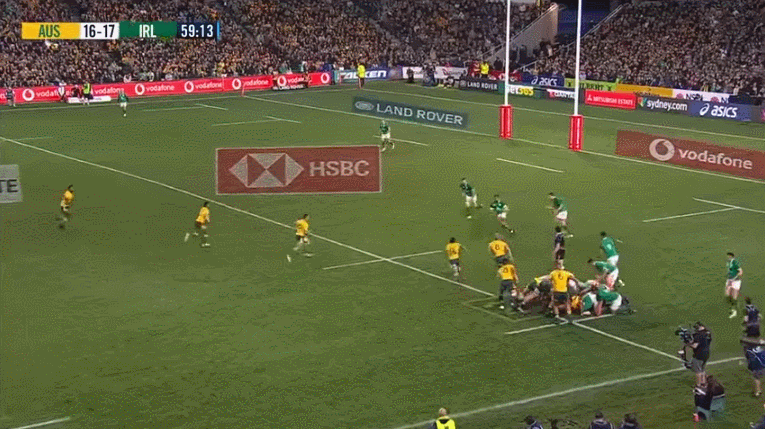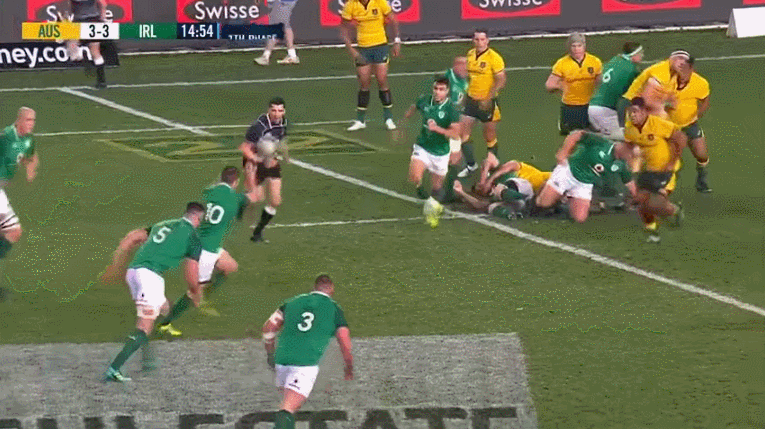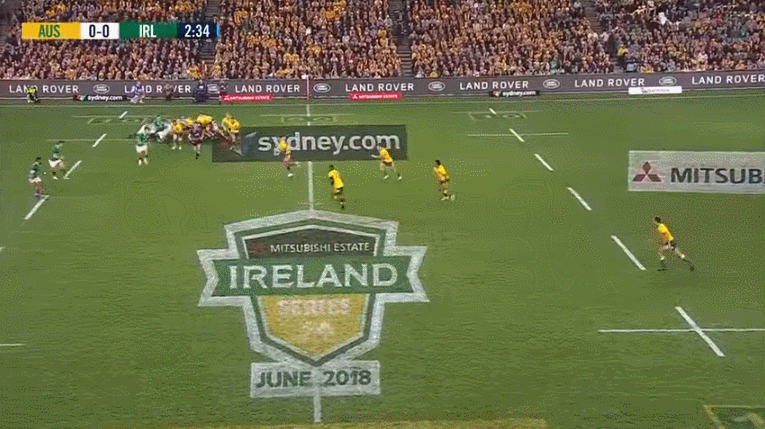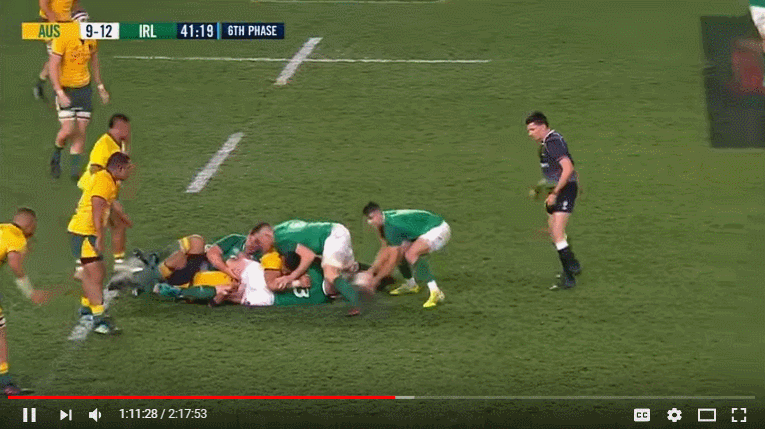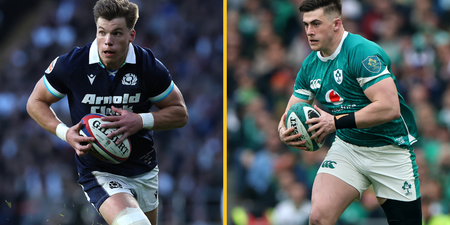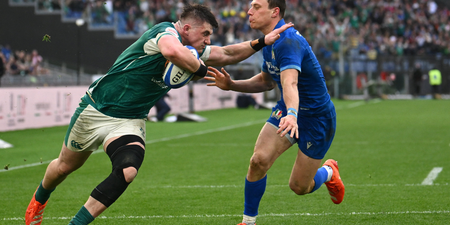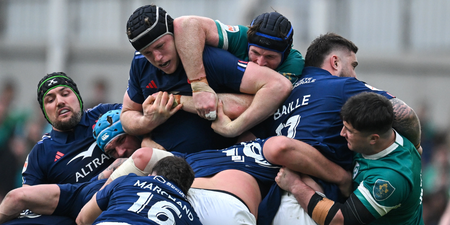Ireland’s third Test win over Australia last Saturday was one of the finest performances we’ve seen from Bundee Aki in an Ireland shirt.
The Connacht centre was at his physical, abrasive best against the Wallabies in Sydney and he will have given Ireland head coach Joe Schmidt plenty to think about when he considers his first-choice centre partnership for future Tests.
A foot injury to Garry Ringrose had given Aki a chance to reprise his midfield combination with Robbie Henshaw from the first Test loss in Brisbane and it was an opportunity he grabbed with both hands.
Ringrose was exceptional in the second Test win in Melbourne as he helped sure up the Irish defence as well as demonstrate his clear improvements as a playmaker.
His short ball to Tadhg Furlong from first receiver was a telling sign of his growing level of confidence in an Irish jersey and just how comfortable he has become as an international centre.
Aki does not offer the same threat as Ringrose as a passer. His short ball to James Ryan in the second-half was telegraphed and resulted in Kurtley Beale forcing a rare Ryan knock on and Aki picking himself up off the ground after he had been dumped in the tackle by Wallabies flanker Lukhan Tui.
However, despite his limitations as a ball player, what Aki does offer is hard carries, stern defence, physicality and intensity.
Ringrose often produces the more dazzling reel of highlights but here we take a look at some of Aki’s more telling contributions from a great series decider in Sydney.
Brilliant Bundee
Just as he had done in the first Test in Brisbane, Aki had once again led the Irish backs in both carries and tackles made in the third Test.
He’s a genuine workhorse in the Irish midfield and Joe Schmidt often uses him as a battering ram to help Ireland get over the gainline and establish strong momentum from first phase ball.
Here is a standard carry from Aki in the second-half. It’s direct, he has low body position in the contact – with a supporting player to latch onto him – and he powers his way over the gainline.
Robbie Henshaw gets a hold of David Pocock’s leg in the jackal before CJ Stander comes along to eliminate the threat of the poach. Ireland recycle the ball through the phases and Conor Murray completes the exit with a box kick.
This is a staple use of Aki in an exit strategy but in more promising attacking position we can see that he has great instincts, and like most New Zealand centres, this innate ability to free the ball in the tackle.
Wallabies inside centre Kurtley Beale had been looking to shoot in on Irish ball carriers throughout the series and he nailed Murray in the first Test with a brilliant defensive read.
Ireland play so flat and close to fly-half Johnny Sexton that you can often afford to jam in and take gambles in defence given just how direct the Grand Slam champions can be.
Here we can see Aki show great instincts to evade the challenge of Beale before powering his way through the line, taking the tackle of Tui and offloading the ball to a supporting Henshaw.
The Leinster centre must be given great credit here for his support line as you can see the play is initially set to attack wide before Henshaw immediately adjusts his line once he sees that Aki has cut inside.
Henshaw moves to get onto his shoulder to receive the offload and turn what could have been a negative loss and a counter ruck into a situation where Ireland are on the front foot in great field position in the Australian 22.
Aki had 10 runs for eight metres in the third Test so he was limited in what he could do in attack but he compensated for his lack of potency with ball in hand in defence.
The Connacht centre made 13 tackles, three more tackles than Robbie Henshaw, second among Irish backs, but it was more the type of tackles he made rather than the number of completed tackles tallied.
Here we can see the Wallabies look to shift the ball wide from an early attack and test Ireland on their defence in the channels, a point of attack the Australians enjoyed great success with in the first Test.
Notice here how Aki tracks the run of Foley until the ball has been passed before he immediately accelerates and hauls Beale in before he can step inside Henshaw or pass the ball wide.
It’s a great example of a good initial read by Aki before he shows excellent effort to get across the pitch and shut down Beale.
Similarly, later in the half, we can see the Wallabies again attack from the set-piece with Samu Kerevi taking the ball to the line with Israel Folau the short runner on his shoulder and Beale and Marika Koroibete trailing behind the play in support.
Kerevi takes the wrong option – as we can see Keith Earls bite in and Beale and Koroibete loop around with Dane Haylett-Petty out wide in support – but it’s a split second decision from Kerevi and Aki makes a great adjustment to make the tackle after initially running past the Queensland Reds centre.
We can see in both instances that Aki is willing to make the effort in defence to shut down opposition attacks. He shows great acceleration and an ability to adjust to the attack in a matter of moments.
However, his kick chase on a Johnny Sexton bomb early in the second-half proved to be a turning point in the game and also swung the series in Ireland’s favour.
Sexton went to the skies from just inside the Wallabies half and scrum-half Nick Phipps let the ball bounce before recovering possession just in front of the Australian line.
Aki chases the ball from the moment it leaves Sexton’s foot and throws both hands away from his body to signal to referee Pascal Gaüzère that he has released the ball carrier and therefore is entitled to make a play at the ball before the ruck has formed.
Aki immediately latches onto Phipps and turns the ball over before Gaüzère awards Ireland a penalty for Phipps not releasing.
Ireland went to the line, were awarded another penalty, went to the line again and CJ Stander scored from a maul to make it a two score game.
Aki’s performance in Sydney may not be enough to tear the Robbie Henshaw-Garry Ringrose partnership apart at international level but it was further evidence that not only is he capable of playing on this stage, but that he can really contribute and make game altering impacts from the inside centre position.

